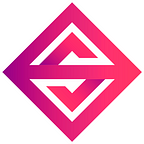Facebook Ads Guide. Part 2.
There are several important things about Facebook promotion every social media manager has to know. We recommend paying attention to practical methods and helpful adviсes on Facebook ads creation. We divided our notes into groups so that you can check what you are doing in every sphere.
Budgets
Define your goals and budgets before launching your campaigns on Facebook and don’t forget to review them while the campaign is ongoing. Don’t start spending money without a payment method approved by Facebook and a clear plan.
Carefully monitor your balance via Facebook Ads Manager. Your current balance reflects the ad costs accrued for your next bill. If you have an unpaid invoice, you’ll see it here https://www.facebook.com/ads/manager/billing/transactions.
Set your account spending limit in Payment Settings: https://www.facebook.com/ads/manager/account_settings/account_billin. This way you can control your total ad costs, as your ads will pause when you reach the limit. You can also set an overall spending limit for every advertising campaign in your Ads Manager, therefore, your ad sets will stop once you’ve reached your campaign spending limit — or the account spending limit (if you’ve reached it earlier). Make sure that your limits and budgets do not contradict each other.
Research
Analyse your competitors. Spend at least one hour a day measuring and writing down what they have published, how many users they have in their communities and what kind of advertising they are launching. To learn the latter you do not need to bribe their marketers — all you have to do is be attentive and use the common Facebook options. For example, you can check whether you are in the targeting group for the competitor’s ongoing campaign. To do this pay attention to such Facebook parameters as “Why am I seeing this” (in the drop-down menu under every advertising on Facebook) and “Your ad preferences”. And if you aren’t in the targeting group you can easily change your interests to prove different scenarios, or even create an account with necessary interests and parameters. It takes a lot of time — but on the other hand, it can take you results you’d never explore in another way.
Don’t forget to use Facebook Pixel. It lets you track your conversions across smartphones, tablets, and desktop computers, reach and remarket people on Facebook who visited your site or specific pages and took specific actions, find new customers who are similar to your website visitors (by creating lookalike audience). If you additionally use event codes you see and track not only basic information but insights about your Facebook ad performance like registrations, adding to cart etc. Nine standard events within the Facebook pixel code enable to track specific events, optimize for conversions and build audiences. For more specific actions create a custom event. You can also share your pixel with all the information (read more here: https://www.facebook.com/business/help/352686481592916?helpref=page_content).
Regularly monitor the performance of your ads and change them, so they don’t annoy your users. Otherwise, people will stop clicking on your ads, increasing your cost per click. Pay attention to the Relevance score parameter, which analyzes various ad quality and relevance factors and helps you to understand how relevant your ads are to your target audience compared to other ads targeting that same audience. If Relevance score is low, first try to correct your targeting, and if it doesn’t help — to adjust your content (consider your advert’s images and message, refresh your creative, test different adverts and audiences).
Targeting
Set detailed targeting. After choosing the location, gender and online behaviors choose additional audience parameters like сonnections. People can be connected or not connected to your Facebook Page, or they can be friends of people already connected to the Page. Use it to create user groups of those who already know your brand and those who are identified as a new audience. You can exclude people who like your Page in Detailed Targeting options.
Custom audiences. Build your own audience based on data about people who have interacted with your brand on Facebook or other platforms. For this you can use customer files like datasheet, website traffic data (collected by Facebook Pixel), data about people who launched your app or game (named App Activity), and data about users, who interacted with your brand through offline channels. Moreover, you can create a list of people who engaged with your content on Facebook or Instagram.
Keep an eye on audience overlap. Your multiple advert sets that have been created to different audiences can contain some of the same people. Facebook tries to avoid showing people too many ads from a single advertiser in a short period of time, so the audience overlap can lead to poor ad delivery. Check whether the two audiences you’re using are overlapping and then try to join some of your overlapping advert sets. Learn more here: https://www.facebook.com/business/help/1679591828938781
Creatives
Photo checking. Facebook tries to fill user’s newsfeeds with relevant but not “screaming” content. Text-heavy images are “screaming”. Therefore your photo ads must include images with less than 20 percent text on them. Use this tool to check it https://www.facebook.com/ads/tools/text_overlay. Do it in advance, so you don’t have to change images at the last moment.
After the launch Facebook ads always undergo through the Learning phase, that is starting again after every significant change in ads options. Therefore we advise to tune and create all that is necessary for the ad before launching. It is better than to change it on the go losing time and money.
There are lots of hidden tips on creating and optimizing Ads on Facebook — but now you know the main of them. Use our guide and may the likes, shares and conversions be with you!
Read Facebook Ads Guide. Part 1 here.
